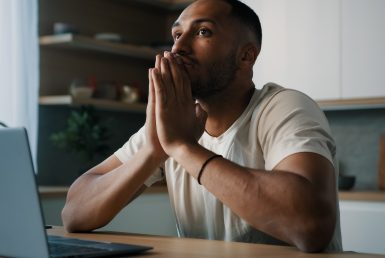Therapy and People of Color
Written By: Jada Williams, MA, LPC
Therapy and mental health have long been taboo in communities of color. A systemic lack of access to resources and information has created an immense stigma. However, the consequences of maintaining a “hush-hush” approach to mental health can be devastating, as it supports patterns of dismissing mental health concerns and even ostracizes those who struggle with mental health issues.
As a therapist, especially a Black female therapist, I understand why seeking services as a person of color can be daunting. Common themes about therapy I hear in my community are, “a therapist won’t understand what I’m going through,” “I can’t trust a stranger with my personal business,” or “I can handle things myself.” These fears may come from real experiences with discrimination and culturally insensitive helping professionals, who have further contributed to cycles of mistrust and misinformation. Hesitance to be vulnerable with strangers has historical backing. Many Black people have shunned public and even private forms of vulnerability to keep from being seen as weak. The pressure to be seen as strong originated as a means of survival. However, this mindset can be a barrier to getting much needed help, perpetuating cycles of dismissing, judging, and often alienating people struggling with mental health issues.
While I understand the obstacles to seeking therapy, I also see the dire need for mental health access and education within our communities. With social media making it increasingly easier to share experiences and resources regarding mental health struggles, we are experiencing a significant cultural shift toward healing. People from many generations, especially millennials and gen Z, are taking positive steps toward destigmatizing mental health. There are calls to recognize generational trauma and break generational curses so that future generations do not need to suffer in silence as many before us have.
So what does therapy look like? At its core, therapy requires acknowledging a problem or an issue, a desire for change, and reflection. Therapy is a conversation with someone trained to listen empathically, help you understand your own experience, and provide a place for you to find peace and healing. In therapy, you can confront problematic behaviors, challenge your beliefs and schools of thought, take action steps toward change, and learn to accept what cannot change. Therapy can be a safe place to process generational trauma and explore your identity as a person of color.
Working with a therapist of color may lessen some of the initial worries you may have about not feeling understood. We recommend reading the bios of potential therapists and setting an appointment to begin the process. Therapy can be a powerful tool in helping you create the life you envision for yourself. I encourage you to challenge the notion that it is selfish or weak to work on yourself. You deserve to heal. You deserve to reflect and be heard. You deserve a healthy, full life.
Join Our Community.
Sign up for our quarterly newsletter with practice news, timely resources, staff highlights, and other helpful tidbits!
Recent Posts






